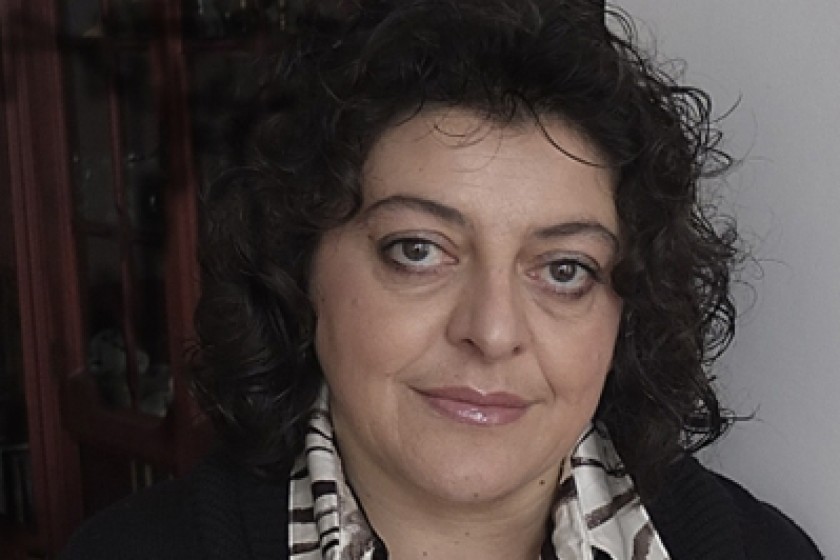
Golden Apricot Artistic Director: "In Armenia we lack a film industry with all the necessary components
Golden Apricot Film Festival Artistic Director Sousanna Harutyounyan speaks to Hetq about her thoughts on this year's festival
How would you compare this year’s ninth festival to previous ones?
I would say look at this year’s festival poster. It’s a big comma. That punctuation says it all. We have to take a step back and see what we have achieved over nine years and what needs to be done for next year’s tenth anniversary.
In a way, this year’s festival was a preparation exercise for next year. It will be a showcase of the good and the not so good. (Sousanna chuckles)
What came before the comma, the pause?
It’s utter madness to organize a film festival in a country with no real international experience and with a very limited film industry. But we persevered and over the years have brought the best names in cinema to Armenia. We have also attracted up and coming young talent to the festival.
Under the Armenia Panorama film category, Armenian directors mainly focused on themes related to the Genocide and western Armenia, in an attempt to return to their roots. Was this standard for the festival?
It’s our pain and these are issues that still exist. We can’t rest until some sort of resolution is reached. If these are public issues, then the cinema must reflect them in an attempt not only to find answers but to raise those issues on an international level. And it is doubly important to maintain certain artistic standards while doing so. If these themes were so prevalent, it means they are of concern to Armenian directors.
I don’t think this is anything new. The Armenian Panorama category always displayed this tendency. Diaspora Armenian directors especially carry around this family trauma and history.
In 2015, the 100th anniversary of the Genocide, the festival must have a separate large project on the subject. It’s my hope that between now and then some really quality films will be made about this collective pain we bear.
It turns out that Armenian directors are only represented in the Armenian Panorama category where they basically compete against each other. Why aren’t Armenian films represented in the international feature category?
This is not a case of devaluing Armenian films but rather it’s an internationally accepted format. There’s a national and international competition. The aim of this format is to show as many national films as possible.
Isn’t there an Armenian feature film that corresponds to international standards and be included in that category?
I believe it was correct to include Armenian feature films in the Armenian Panorama category. Our strategy is to increase national completion according to our means. We are trying to create the best conditions in which to present Armenian films.
There is the fear that if an Armenian film is entered in the international features category it will be pushed aside and not stand up to scrutiny. Our directors must recognize this; that we are merely motivated by the best of intentions when we include their films in the Armenian Panorama section. We just want to ensure the best conditions to present them
Take a look at the Armenian film “If Only Everyone” which won the Best Armenian Fiction Film award this year. It’s already been invited to be shown at several important film festivals.
So what’s preventing the development of our local cinema?
In Armenia we lack a film industry with all the necessary components. It’s a complex organism and the production side is just one aspect. Films must be shown and we have no mechanisms to gauge the response of viewers. Then too, there is no connection between our Armenian cinema and the international cinema, so that Armenian cinematographers understand the tendencies taking place in the wider world – the language, themes, etc.
Furthermore, film reviewing in Armenia is lacking. The cinema is an integrated whole. If one of the chains is lacking the entire system suffers. But I see a trend, step by step, to connect the Armenian cinema to that which exists outside.
Let’s get to some technical issues. What happened to the showing of Alexander Sokurov’s film “The Sun”? It wasn’t shown in its entirety and people left the theatre. Even Sokurov didn’t want to respond to what had happened.
In this case, the festival can’t be blamed. Everything was checked beforehand; the color and sound. Who would have thought that the end of the film was missing? This is the first such case in nine years. The DVD sent to us by Sokurov’s studio didn’t contain the entire film. While we respect Sokurov’s situation he must reciprocate that respect. We arranged for a full showing of the film in just one day at great cost.
And what about the mix-up at the showing of the closing film “Love”? People who had purchased tickets showed up on Saturday at 6pm only to be told to come back at 8:30.
It was a technical mix-up. The 6pm showing was only for people with invitations. Moscow Cinema should never have sold tickets for the 6pm showing. We sympathize with those who came to the 6pm showing but we placed announcements regarding the change on the walls of the cinema two days in advance.
 Videos
Videos Photos
Photos
Write a comment